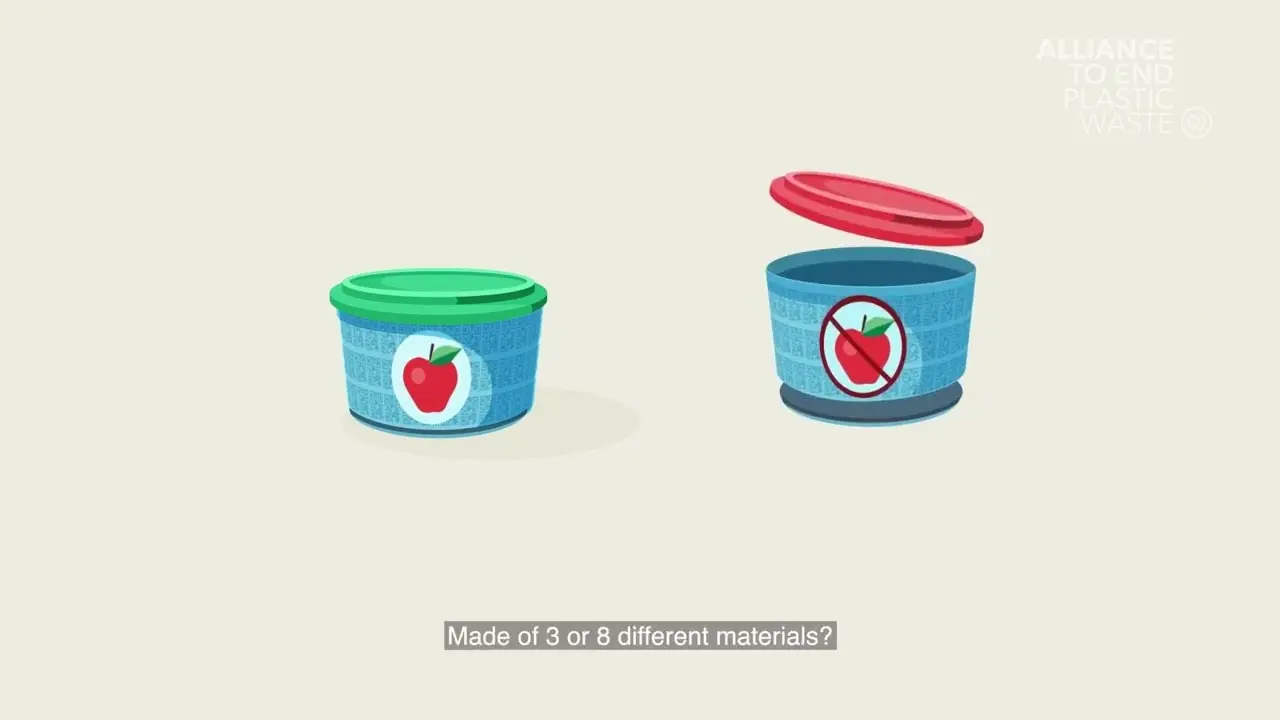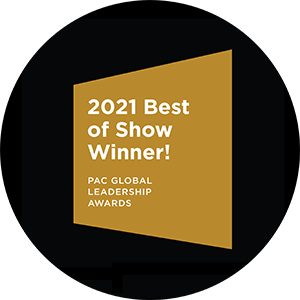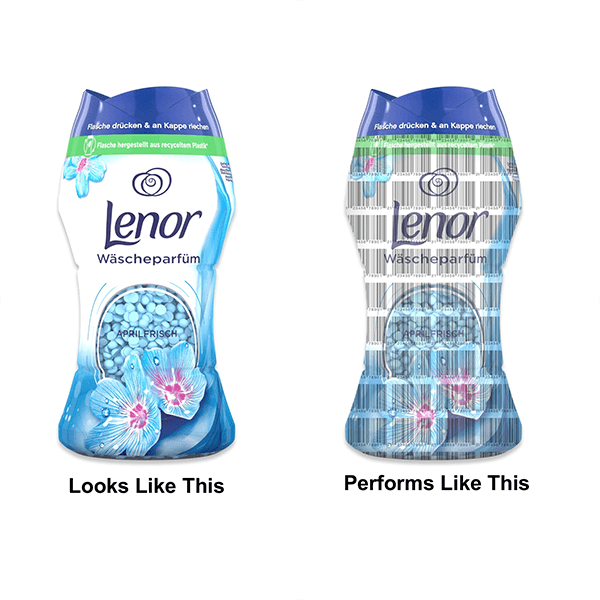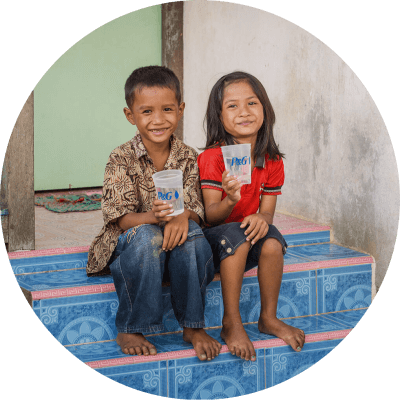11/16/2023
P&G Introduces Digital Watermarking Test in France for Enhanced Recycling
Through partnership and innovation, this is a step toward ensuring more waste is collected and recycled.
Sorting challenges at recycling centers can get in the way of more items getting recycled. A nationwide pilot project to test imperceptible, digital watermarks on consumer product packaging is holding promise to improve waste sorting streams and ensure more material gets a second life.

Facilitated by AIM — European Brands Association — and powered by the Alliance to End Plastic Waste and its participating consortium members, the HolyGrail 2.0 program is testing its innovation on a national scale in France.
Transforming recycling systems is a big challenge — and one that requires time and collaboration. Throughout the last three years, the HolyGrail 2.0 program has amassed more than 130 organizations to work on reimagining the way the world sorts and reprocesses used packaging items into new high quality recycled materials.
“From the inception of this concept through today, we made this idea a viable technical achievement; now we just need to put it into practice in market to prove out the impact this technology can make to improve recycling rates and help keep materials in circulation with fewer going to landfills or incineration. Moving into the national market test in France will allow us to better demonstrate the impact of digital watermarking.”
The idea is that with digital watermarks, consumers can be confident that what they throw in the recycling bin will have a greater chance to be reprocessed into a new and valuable material.
P&G will have multiple products from its leading brands, including Ariel, Mr. Propre and Head & Shoulders, in the pilot. More participants are encouraged to join to enable a robust demonstration of the technology — and AIM wants to hear from you if you’re in the value chain and willing to contribute.
Before moving to the execution of the pilot in France, HolyGrail 2.0 is working with facilities in Germany and Denmark to finalize R&D trials to accurately sort both films and rigid packaging. The goal is to have access to more high-quality post-consumer recycled material (PCR) that ultimately finds its way in the same or similar packaging applications in the food, detergent, cosmetic and hygiene industry.
The concept of using digital watermarks came from P&G researcher Gian De Belder, who is dedicated to getting more out of our packaging materials, long after their first use. Our company continues this drive, advancing technologies that can improve today’s waste management processes, while focusing on reducing our reliance on virgin, petroleum-based plastic material.
Keep scrolling to learn more about our work with Holy Grail 2.0; read more about the positive results behind this technology; and see the progress we’re making as a company to reduce waste.
4/21/2023
Raising the Bar on Recycling: HolyGrail 2.0
Procter and Gamble is pleased to continue supporting Digital Watermarks Initiative HolyGrail 2.0. This program is now in Phase 3 and was recently featured by Signal 360. Read more about how this effort is Raising the Bar on Recycling.
A program that develops products carrying digital watermarks that help make the sorting of recyclables easier and more efficient. The program is working detailed plans for an in-market pilot, in which consumers will be able to use recycle bins or collection points, where sorters will be better equipped to properly sort the package for recycling.
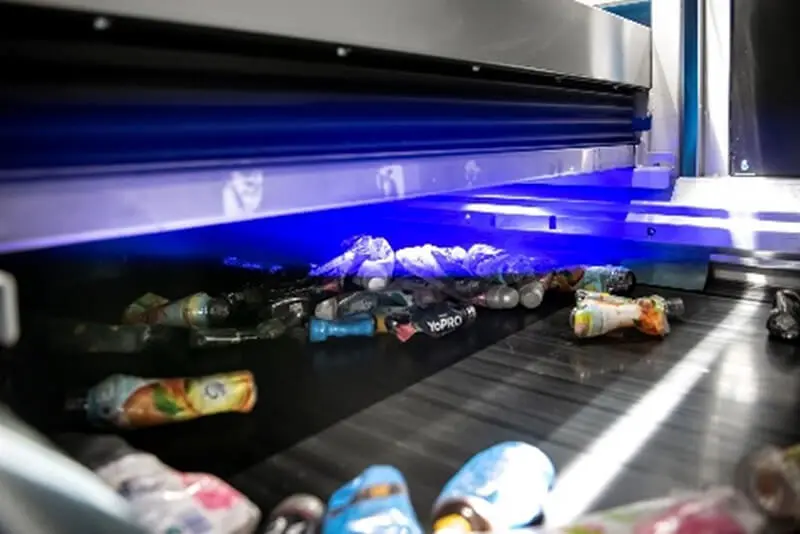
The program is working detailed plans for an in-market pilot program, where products carrying digital watermarks will be in-market (available at retail) and consumers will participate by placing these items in recycling bins for collection and sorting. The beauty of this technology is that it only requires people get their recyclable packages to the recycling bin or collection point. From there, the sorters will be better equipped to properly sort the package for recycling.
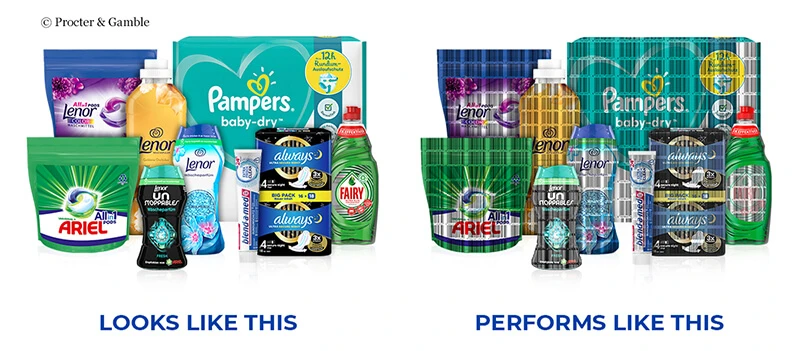
Further industrial tests will be executed later this year (2023). This program is driven by AIM – European Brands Association and powered by the Alliance to End Plastic Waste.
You can see how this works with this animated video:
This program is one more way P&G is innovating in partnership with industry to enable a more circular economy so that material has greater utility and materials are prevented from becoming waste. Click here to read more about our sustainability efforts.

9/7/2021
HolyGrail: A Digital Solution to Sustainability Challenges
P&G believes in the power of digital watermarks to step-change recycling for the better. In 2016, we partnered with The Ellen MacArthur Foundation to establish HolyGrail—a collaborative effort designed to solve one of the largest obstacles facing plastic recycling: inefficient sorting at recycling facilities.
Digital watermarks may only be the size of a postage stamp, but they carry a wide range of attributes such as packaging type, material and usage.
P&G will support the test market industrial trials with more than 100 of our products in Europe. These items carry a digital watermark and as such will provide the opportunity to demonstrate that digital watermarks have potential to be leveraged to improve waste sorting and to achieve a more efficient recycling. We continue to work as members of the HolyGrail initiative to advance this project and highly appreciate the support of the Alliance to End Plastic Waste in enabling the vision of HolyGrail 2.0.
Read more about HolyGrail 1.0 and 2.0 and how we’re partnering with organisations including AIM – European Brands Association and the Alliance to End Plastic Waste to use technology to enable a more circular economy.
You can learn more here about the next phase of the HolyGrail program, HolyGrail 2.0.
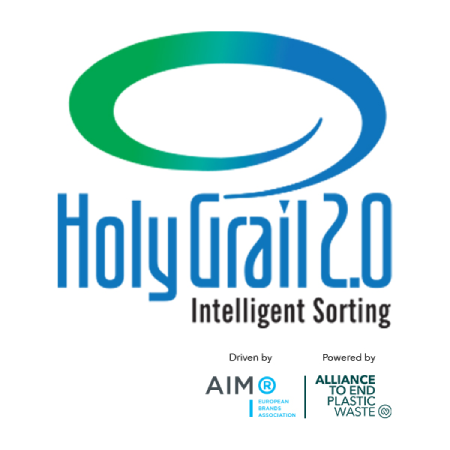
AIM, the European Brands Association, and the Alliance to End Plastic Waste announced today a partnership to drive the next stage of development for intelligent waste sorting under the Digital Watermarks Initiative HolyGrail 2.0. Working with the City of Copenhagen, they will conduct the semi-industrial test phase of the pilot. With this milestone, developers move one step closer to precision identification and sorting of plastic packaging waste through digital watermarks, with the potential to revolutionise the sorting and recycling process of plastic packaging.
Over the next four months, a prototype sorting detection unit will be installed at the Amager Resource Centre (ARC) in Copenhagen, where the trials with 200 coded SKUs (stock keeping units) and demonstrations will be held. Engineers will test for several parameters including the speed and accuracy of the system, to ensure its ability to withstand the pressures of full-scale industrial operations. If successful, digitally watermarked products could be introduced to store shelves in Denmark, France and Germany by the first half of 2022 for in-market demonstrations and industrial-scale trials.
Digital watermarks are imperceptible codes, each the size of a postage stamp. They cover the surface of a consumer goods packaging and carry a wide range of attributes such as packaging type, material and usage.
Used packaging is collected and scanned on the sorting line with a high-resolution camera which detects and decodes the digital watermark. The packaging is then sorted into corresponding streams, based on specified attributes including food, non-food or polymer types. This leads to more accurate sorting streams and higher quality recyclates to be channelled back into the plastic packaging value chain.
Open Houses comprising a virtual tour and demonstration of the prototype sorting detection unit will happen at ARC on 19 October and 18 November 2021. Interested stakeholders can register here.
This milestone marks the second year of the HolyGrail 2.0 project. Since its launch in September 2020, it has grown to include over 130 participating companies and organisations across the complete packaging value chain. The pioneering HolyGrail 1.0 was facilitated by the Ellen MacArthur Foundation between 2016 and 2019.
“We are delighted to enter the next phase of semi-industrial testing within the Digital Watermarks Initiative together with our new partner, the Alliance to End Plastic Waste”, said Michelle Gibbons, AIM Director General. “An initiative like this can only thrive with the wide support of different key stakeholders in terms of expertise, but of course also financial support. Collaboration is the way forward to achieve the EU's circular economy goals and we are confident that this technology has the potential to drive a truly circular economy for packaging.”
“Recycling is a key pillar that must be invested in to advance a circular economy in plastic waste. The Alliance is excited to support the scaling of this project in its next phase of progress, in line with our mission to end plastic waste in the environment,” said Jacob Duer, President and CEO of the Alliance. As testing continues, we know there will be many things to solve along the way, but with strong collaboration of our public and private sector partners, we believe intelligent sorting can be a new frontier that could help dramatically improve plastic waste management.”
“The City of Copenhagen has a political ambition to become the world’s first carbon neutral capital by 2025. High quality plastic recycling that substitutes new production and reduces incineration is a key instrument to reach this goal. HolyGrail 2.0 has the potential to achieve this and we look forward to doing our part in the testing of the technology”, said Merete Kristoffersen, Head of Division, Waste and Resources, City of Copenhagen.
Timeline and test markets
With the commencement of semi-industrial trials, HolyGrail 2.0 is on track to get to the exciting phase of in-market demonstrations planned for 2022.
The two machine vendors, Pellenc ST and Tomra, together with the selected digital watermarks technology provider Digimarc, are developing add-on modules for their detection sorting units, to be combined with existing NIR (near infra-red) sorters.
Both modules will be tested during the semi-industrial phase via trials at two different test locations. The first controlled tests using industrial-sized equipment and the Pellenc ST/Digimarc module are scheduled for October 2021 at ARC sorting centre.
Pending successful completion of the semi-industrial trials, brand owners and retailers will then bring their enhanced products to market in Denmark, France and Germany. During this commercial test phase, consumers will buy on-shelf products with digitally watermarked packaging. Used packaging will enter the waste stream after consumption. The sorting units will be placed in 5 different locations in France and Germany, including MRFs (Materials Recovery Facility), PRFs (Plastic Recovery Facility) and recycling plants.
This last phase is scheduled to run until 3Q 2022 and a public report outlining the techno-economic analysis of the digital watermark technology for sorting of packaging waste will be issued.
2/19/2021
HolyGrail Wins Prestigious Packaging Consortium Leadership Award for Best in Show
P&G is excited to share the HolyGrail program has been awarded Best in Show by the 2021 Packaging Consortium Leadership Awards! This is a great honor for HolyGrail and also for P&G Packaging Innovation- it is the 4th Best of Show award in as many years for P&G.
This award recognizes the leadership P&G provided to initiate the program in 2015 and to lead it to phase two, bringing Lenor Beads into market with digital watermarking in late 2020. Now together with AIM and over 100 consortium partners, we are continuing work to establish an industrial market test in order to better understand the full potential for this technology to improve recycling rates in the EU. Early work on this program has provided proof of concept, demonstrating there are many possible benefits of incorporating digital watermarking into packaging. Of those, possibly the most powerful is making package waste more readily scannable for sorting which can increase the number of packages which are recycled. Increasing the amount of packaging that gets recycled helps advance the circular economy and reduces the amount of waste that goes into incinerators or landfills.
You can learn more HERE about the next phase of the HolyGrail program, HolyGrail 2.0.
See HERE for the post by the PAC Global Leadership Awards.
9/10/2020
P&G Continues Support of HolyGrail with AIM Test Market
P&G is pleased to support AIM, the European Brands Association as they bring together over 85 companies and organizations from the complete packaging value chain with the ambitious goal to assess whether a pioneering digital technology can enable better sorting and higher-quality recycling rates for packaging in the EU, to drive a truly circular economy. P&G’s own Gian DeBelder is providing leadership for this important program and P&G brands will support the next phase of the program. P&G established and has led HolyGrail 1.0 Pioneer Project under New Plastics Economy (2016-2019) resulting in proof-of-concept on a protype machine, and we are now moving to the next phase (under AIM’s leadership), with the vision to prove industrial feasibility via this National Test market.
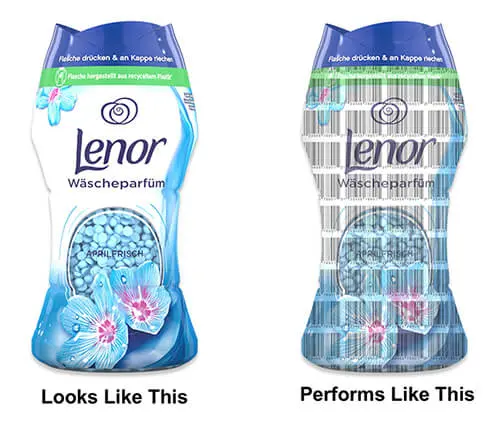
Digital watermarks are imperceptible codes, the size of a postage stamp, covering the surface of a consumer goods packaging. They can carry a wide range of attributes such as manufacturer, SKU, type of plastics used and composition for multilayer objects, food vs. non-food usage, etc. The aim is that once the packaging has entered into a waste sorting facility, the digital watermark can be detected and decoded by a standard high-resolution camera on the sorting line, which then – based on the transferred attributes – is able to sort the packaging into corresponding streams.
One of the most pressing challenges in achieving a circular economy for packaging is to better sort post-consumer waste by accurately identifying packaging, resulting in more efficient and higher-quality recycling. Digital watermarks may have the potential to revolutionize the way packaging is sorted in the waste management system, as it opens new possibilities that are currently not feasible with existing technologies. The discovery was made under the New Plastics Economy program of the Ellen MacArthur Foundation, which investigated different innovations to improve post-consumer recycling. Digital watermarks were found to be the most promising technology, gathering support among the majority of stakeholders and passing a basic proof of concept on a test sorting line. The branded goods industry has now stepped in to facilitate the next phase as cross-value chain initiative under the name “HolyGrail 2.0”, which will take place on a much greater scale and scope. This will include the launch of an industrial pilot in order to prove the viability of digital watermarks technologies for more accurate sorting of packaging and higher-quality recycling, as well as the business case at large scale.
For more about the HolyGrail project and what P&G is doing to address the challenge of plastic waste, Click Here for a fact sheet. Also find more information at Digital Watermarks Initiative HolyGrail 2.0.
9/26/2019
P&G-LED HOLYGRAIL PROJECT EARNS TOP HONORS AT PACKAGING EUROPE’S SUSTAINABILITY AWARDS
The multi-company collaborative venture also wins ‘Driving the Circular Economy’ category
Winners of the world’s most prestigious competition for sustainable packaging innovation were announced in Nuremberg on Sept 25th. The P&G-led HolyGrail pioneering project won both the Overall Sustainability Awards 2019 trophy along with honors for ‘Driving the Circular Economy’ category.
HolyGrail is a collaborative effort designed to solve one of the largest obstacles facing plastic recycling – inefficient sorting at recycling facilities. In 2016, P&G’s sustainable packaging expert Gian deBelder kicked off a coalition of companies to pioneer HolyGrail in Europe under the Ellen MacArthur Foundation’s New Plastics Economy Pioneering Projects mantle. The project investigated how tagging of packages can have a drastic impact on more accurate sorting and high-quality recycling via tracers and digital watermarks embedded in the plastic. Improved sorting can improve both the quality and quantity of recycled material on the market, which would mean more plastics go back to the marketplace and bring value instead of becoming waste. This week P&G and the HolyGrail pioneering project was recognized for these efforts amidst a crowded field of worthy contenders in Packaging Europe’s Sustainability Awards 2019 for “Overall Winner” as well as “Driving the Circular Economy” award.
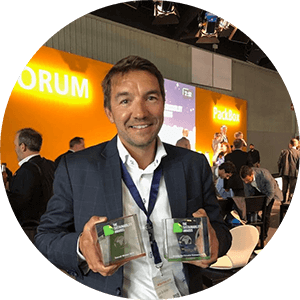
Over the past three years, P&G and its coalition partners have invested expertise and resources in the Holy Grail project to devise a more consistent and scalable tagging system across all packages. Traditionally, each company has used its own unique markings to identify the recycling potential of packaging. This system caused delays in recycling progress and confusion on how best to reinvent waste. Project HolyGrail sought to solve this problem by paving the way for “intelligent sorting” at recycling facilities.
Project Leader Gian deBelder said, “Low recycling rates in EU are mainly related to low collection numbers and low sorting efficiencies. Project HolyGrail looked into different technologies to improve the latter. Packaging can be made intelligent through the use of Digital Watermarks, without having an impact on established recycling streams (e.g. no battery, no metallic wires, etc are needed to make them smart).
“During this project, the concept of an add-on module onto an existing sorter has been successfully proven. This now opens a variety of possibilities today not feasible with standard sorting technologies. It has been a great three years of leading this true full-value chain project and I want to thank all members that contributed to the successful proof-of-concept of this industry-first new sorting technology.”
Project HolyGrail proved the value of tracer and digital watermark technologies, a crucial step in determining the best direction for establishing a universal method for faster processing and better results. By working with dozens of companies across the whole value chain, including machine vendors, technology providers, material producers, packaging manufacturers, brands, retailers and recyclers, the HolyGrail project was able to use the technologies in tests, making progress toward the entire industry establishing and adhering to a standardized method.
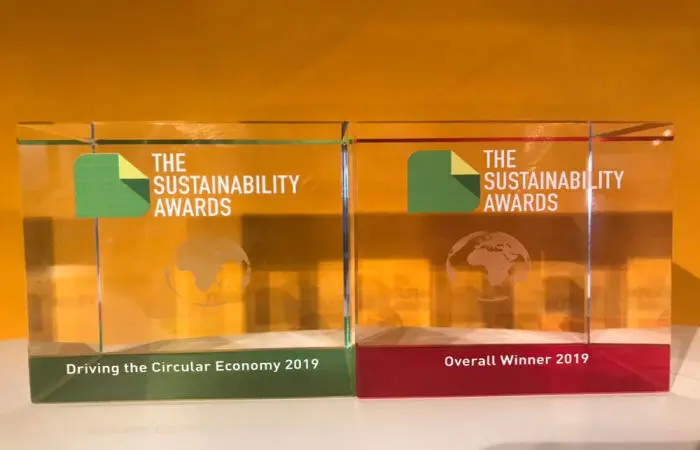
The work is not over, and HolyGrail 2.0 is already underway, continuing to work across the industry to put these technologies into practice across more packages and more recycling facilities for improved sorting and ultimately, less waste in our environment.
P&G is passionate about not only the creation of innovative products and packaging, but also ensuring the sustainability of its products and continued support for the circular economy. One of P&G’s Ambition 2030 environmental sustainability goals is to ensure 100 percent of its packaging is recyclable or reusable. With programs like HolyGrail, P&G goes a step further by coming together across the industry and helping ensure recycling technology is also evolving to be more effective and respond to increased demands.



